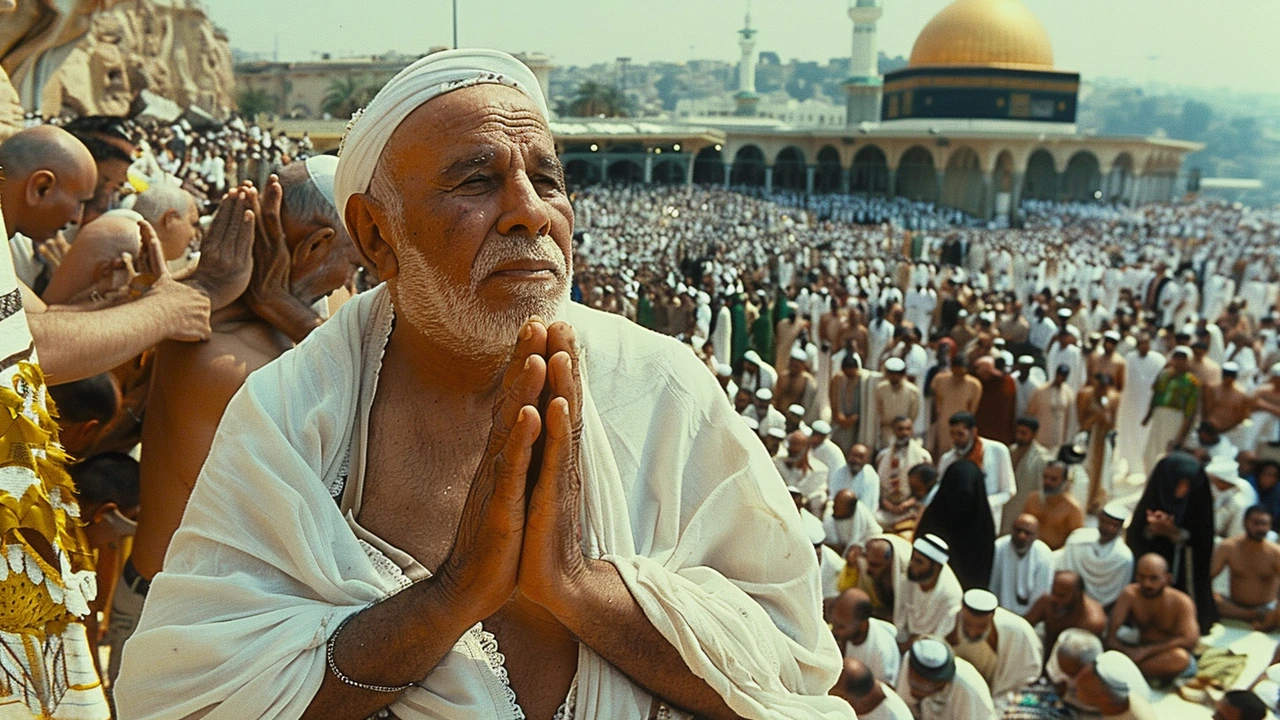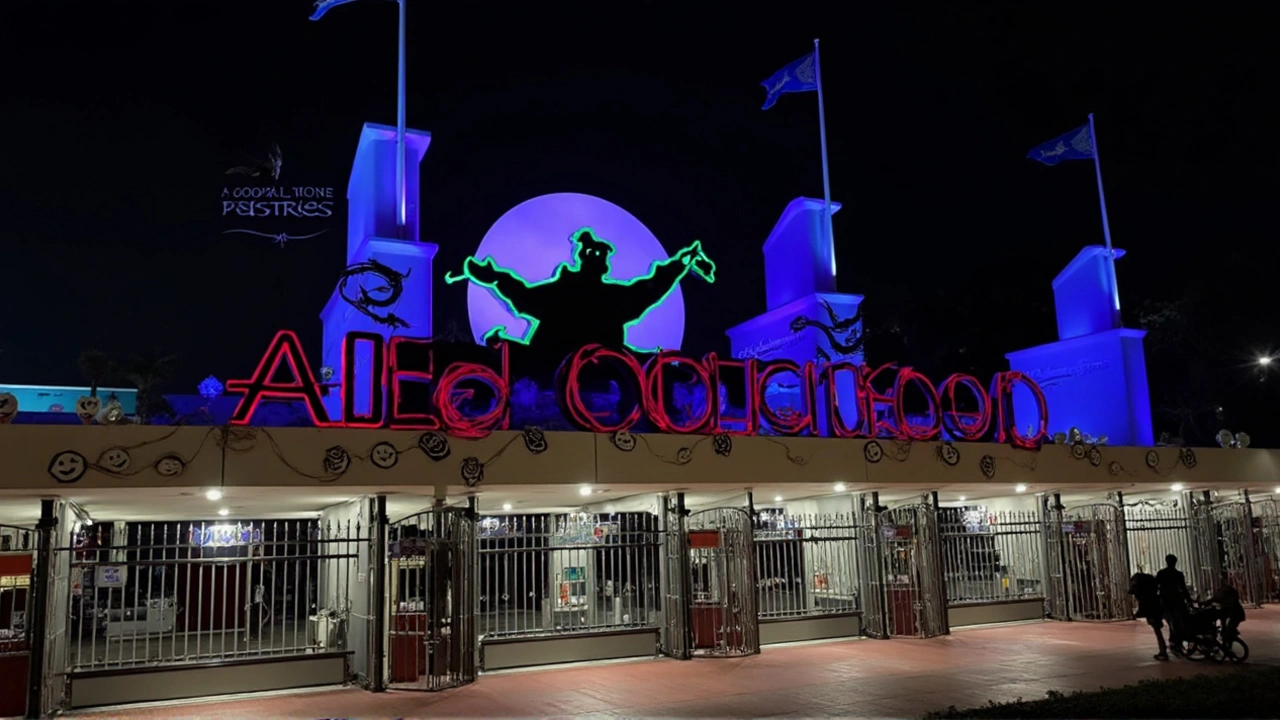
Muslim Pilgrims Ascend Mount Arafat Amid Scorching Heat in Hajj Climax
The sun bore down relentlessly as more than 1.5 million Muslim pilgrims made their way to Mount Arafat in Saudi Arabia, the pivotal moment of the annual hajj pilgrimage. Battling extreme heat, the devoted congregants ascended the sacred hill, dressed in simple white garments that symbolize purity and unity. This year, the pilgrimage unfolded in the somber shadow of the ongoing conflict in Gaza. The heart-wrenching images and news from the war-torn region resonated deeply with the pilgrims, many of whom spent long hours in prayer seeking the divine grace for the suffering Palestinian people.
A Profound Moment of Devotion
The significance of Mount Arafat cannot be overstated. It is here that the Prophet Mohammed is believed to have delivered his final sermon more than 1,400 years ago. Arriving at dawn, the pilgrims climbed the 70-meter high hill, an act that holds profound spiritual meaning. Drenched in sweat under the sweltering sun, Muslims from every corner of the world came together, their chants of “Labbaik Allahumma Labbaik” echoing in unison. They prayed with fervor, their supplications merging into a collective plea for peace and mercy.
A Pilgrimage Rooted in Tradition
The hajj, one of the five pillars of Islam, mandates that all Muslims with the means should undertake this journey at least once in their lifetime. It is a demonstration of the faith's unity and an essential rite that follows the Prophet Mohammed's final pilgrimage. However, this year, the rituals are performed against a backdrop of rising temperatures and escalating political tensions. Saudi Arabia has issued stern warnings against political activities during the hajj, yet the palpable support for Palestinians could not be contained.
Support for Gaza
The plight of Gaza has been a central theme throughout this year’s pilgrimage. In a significant move, about 2,000 Palestinians were invited to perform the hajj by Saudi King Salman himself. Iran's supreme leader Ayatollah Ali Khamenei's message urging support for Gaza only added to the fervent prayers and discussions among the pilgrims. Despite the societal and political admonitions, the sense of solidarity with the Palestinians was unmistakable.
Climate Challenges
Climate change has rendered the hajj more challenging than ever before. With regional temperatures climbing steadily—0.4 degrees Celsius each decade—the desert heat becomes an ever-greater obstacle for the millions of pilgrims. This year, temperatures soared to 43 degrees Celsius, and Saudi authorities were quick to advise pilgrims to remain hydrated and protected from the sun's fierce rays. In the previous year alone, over 10,000 heat-related illnesses were recorded, underscoring the urgent need for precautionary measures.
Rituals of Faith
Following their profound time at Mount Arafat, the pilgrims will progress to Muzdalifah. Here, under the starlit sky, they will collect pebbles for the ritual 'stoning of the devil' in Mina. This symbolic act, performed on the following day, recreates the defiance of Satan's temptations. Each step of the hajj is meticulously organized, mirroring the Prophet Mohammed’s path and experiences.
The hajj is not just a journey of physical pilgrimage but one of deep spiritual significance, bringing together Muslims in a fusion of faith, unity, and mutual respect. The Al Saud dynasty recognizes and upholds the importance of the hajj within the Islamic faith as a vital source of legitimacy.
Concluding the Pilgrimage
As the sun sets on another day in Saudi Arabia, the pilgrims wrap up their prayers, their hearts full, their spirits lifted. The hajj is more than an act of devotion; it is a transformative experience that renews faith and fosters a sense of community that transcends borders and politics. With every prayer whispered on Mount Arafat, the hajj pilgrimage continues to be a beacon of faith in a troubled world.
The recent hajj, underscored by extreme temperatures and geopolitical tensions, reflects both the resilience and adaptability of the Muslim faith. Despite the numerous challenges, pilgrims from across the globe convened in a testament to their shared belief and traditions. As they descend from Mount Arafat to Muzdalifah and subsequently to Mina, their journey serves as a reminder of dedication, faith, and the enduring human spirit.






Surya Prakash
June 16, 2024 AT 19:23One must reflect on the moral weight of praying for those suffering while neglecting personal well‑being.
Sandeep KNS
June 23, 2024 AT 18:03It is, of course, fascinating how the pilgrimage coincides with geopolitical unrest, yet the organizers remain steadfastly aloof. One can almost hear the sighs of bureaucratic ennui echoing across the desert plain. The very notion of sanctity juxtaposed with media sensationalism is, frankly, a study in exquisite irony.
Mayur Sutar
June 30, 2024 AT 16:43The sheer scale of unity on Mount Arafat is a reminder that humanity can gather under shared purpose. Many feel the weight of the Gaza crisis, and their prayers become a bridge of compassion. It's uplifting to see such solidarity, even under the scorching sun. The collective chant reverberates like a hopeful chorus, transcending borders. May this spirit inspire lasting peace.
Nancy Ortiz
July 7, 2024 AT 15:23From a lexicon standpoint, the ritualistic nomenclature employed by the authorities is both ostentatious and, dare I say, superfluous. One observes a penchant for bureaucratic verbiage that ostensibly obfuscates rather than clarifies. Sarcastically, the heat index could be described as an exogenous variable in the theological equation. Yet the pilgrims persevere, an embodiment of stoic resilience.
Ashish Saroj( A.S )
July 13, 2024 AT 10:16Now, consider the paradox: a pilgrimage meant for spiritual purification is simultaneously a showcase of climate adversity!; Yet, one must ask-are we merely spectators to a grandiose theater?; The narrative is, undeniably, a contested arena of interpretation.
Ayan Kumar
July 18, 2024 AT 01:23Oh, the drama of the desert! The sun beats down like an over‑zealous spotlight on a stage, and every pilgrim becomes an actor in this epic saga. I mean, really, who needs a script when the heat writes its own tragedy? Yet, they march on, chanting like a choir that refuses to miss a note. It’s a masterpiece of endurance and hope.
Nitin Jadvav
July 21, 2024 AT 12:43From a coaching perspective, staying hydrated is the #1 rule-no point in being a hero if you collapse midway. Seriously, those water stations are there for a reason; skip them at your own peril. Keep a steady pace and remember, the journey is as much about mental stamina as physical.
Adrish Sinha
July 25, 2024 AT 00:03Keep your spirits high, and you’ll find the climb less daunting. A little optimism goes a long way in the desert heat.
Arun kumar Chinnadhurai
July 28, 2024 AT 11:23When confronting the brutal reality of a 43°C environment, the body’s thermoregulatory mechanisms are put to an extreme test. Sweat evaporation becomes the primary avenue for heat dissipation, yet excessive loss can precipitate hyponatremia if fluid intake lacks electrolytes. The Saudi Ministry of Health recommends a minimum intake of 3 liters of water per hour, supplemented with oral rehydration salts to maintain plasma osmolarity. Moreover, wearing lightweight, breathable fabrics such as cotton or moisture‑wicking blends mitigates conductive heat gain. In the early hours of dawn, when the sun’s angle is shallow, pilgrims are encouraged to commence the ascent, thereby reducing exposure to peak solar radiation. Protective headgear and UV‑blocking sunglasses significantly diminish the risk of heat‑induced dermatological damage. The implementation of shaded rest areas along the ascent path provides intermittent relief, allowing core temperature to plateau. Additionally, medical tents equipped with rapid cooling units and intravenous access are strategically positioned to address heatstroke emergencies. Studies from previous Hajj seasons indicate that the incidence of heat‑related illnesses correlates strongly with delayed hydration and insufficient rest intervals. Therefore, a structured schedule incorporating short, frequent breaks is essential. Pilgrims are also advised to limit the consumption of caffeinated beverages, as caffeine exerts a diuretic effect, potentially exacerbating dehydration. The role of community support cannot be understated; volunteers distributing water bottles and monitoring vital signs contribute to collective safety. Lastly, mental preparedness-understanding the physiological signals of overheating-enables individuals to self‑regulate and seek assistance promptly. By integrating these multidisciplinary strategies, the pilgrimage can proceed while safeguarding the health of millions.
Aayush Sarda
July 30, 2024 AT 18:56It is commendable that our nation’s faithful can gather safely, yet one must highlight the unparalleled logistical prowess of our host. The coordination displayed rivals any modern infrastructure project, and that, dear readers, should be a point of pride. While external commentators may criticize, the reality on the ground is a testament to resolute stewardship.
Mohit Gupta
August 1, 2024 AT 12:36Wow!!! The heat is insane!!!; Don’t forget to sip water every few minutes; otherwise, you’ll feel like a wilted plant!!!
Varun Dang
August 3, 2024 AT 06:16In summary, the convergence of faith, climate resilience, and communal solidarity offers a hopeful blueprint for future pilgrimages. By adhering to proven health protocols and fostering mutual support, we can ensure that the spiritual journey remains both safe and uplifting. Let us continue to pray for peace and well‑being for all.